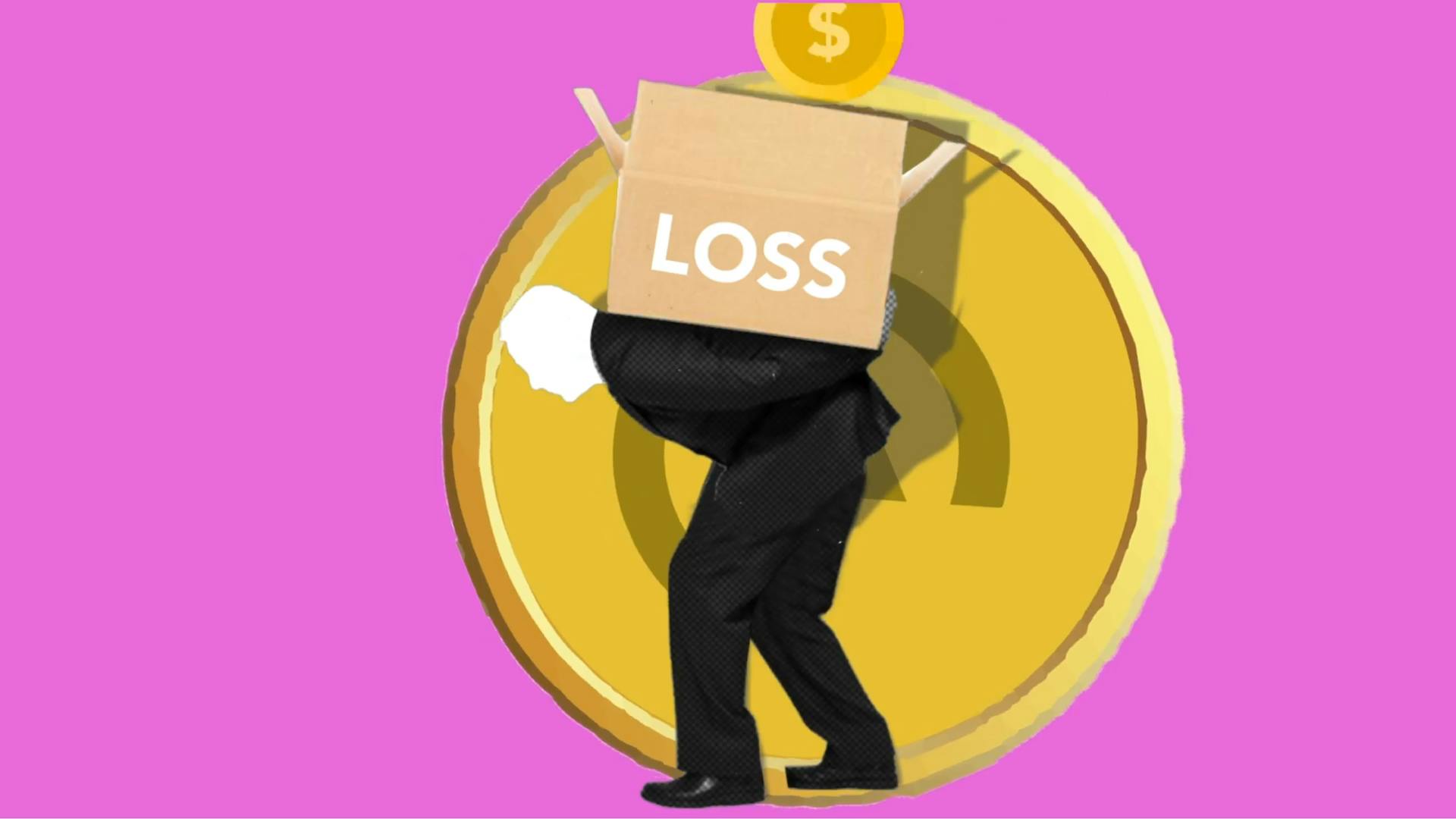
If you're struggling with trade school debt, know that you're not alone. Many students graduate with significant debt, but there are programs available to help alleviate this burden.
The Public Service Loan Forgiveness (PSLF) program is one such option. By working in a qualifying public service job for 10 years, you may be eligible to have your remaining balance forgiven.
Some trade schools offer debt forgiveness programs directly to their students. For example, the Universal Technical Institute offers a debt forgiveness program for students who work in the automotive industry for a certain number of years.
The amount of debt forgiven can vary greatly depending on the program and the individual's situation.
For more insights, see: Tax Debt Forgiveness after 10 Years
Understanding Trade School Debt Forgiveness
Trade school graduates can qualify for Public Service Loan Forgiveness, Teacher Loan Forgiveness, and IDR plans based on profession or circumstances, without differentiation between educational institutions.
These programs can provide monthly payment flexibility based on income, making them ideal for trade school graduates with variable incomes.
Readers also liked: Stocks to Trade Paper Trading
IDR plans can lead to forgiveness of the remaining loan balance after set repayments.
The newest IDR plan is the Saving on a Valuable Education (SAVE) Plan, which can decrease monthly payments for low- and middle-income borrowers.
It's essential to understand the eligibility criteria for each program and ensure your loans meet the requirements, as not all types of loans qualify for certain programs.
Additional reading: Student Debt Forgiveness Plan Legal Challenge
Eligibility and Requirements
To qualify for trade school debt forgiveness, you'll first need to understand the eligibility requirements for the loans themselves. Private student loans typically require good credit, but some lenders may offer loans to students with limited credit if they have a cosigner.
To be eligible for federal student loans, you'll need to be a U.S. citizen or eligible non-citizen, and you'll need to enroll in an eligible program and complete the Free Application for Federal Student Aid (FAFSA). Credit history isn't a factor in federal student loan eligibility.
You can use federal student loans for a variety of education programs, including community college, professional degree programs, and trade programs. Direct Loans can even be used for alternative certification programs.
Take a look at this: Trade Coin
The Importance

Student loan forgiveness is a vital benefit for trade school students. It can provide debt relief and financial security, helping to alleviate the financial strain of student loan debt.
Debt from trade school programs can be significant, even though they're shorter than traditional college or academic degrees. Borrower defense is a provision that allows eligible borrowers to seek forgiveness if their trade school misled them or engaged in misconduct.
Graduates with more discretionary income can contribute to the economy, boosting economic growth. This can have a positive impact on the community and the country as a whole.
GOOD TO KNOW: The federal Education Department can apply the borrower defense provision if your school closed before you completed your degree.
What Qualifies You?
Trade school graduates can qualify for student loan forgiveness based on profession or circumstances through programs like Public Service Loan Forgiveness, Teacher Loan Forgiveness, and IDR. These programs don't differentiate between educational institutions.
Direct Loans used for alternative certification as well as bachelor's degree programs may be eligible. This includes community college, professional degree, and/or trade programs.
You can check out the newest IDR plan, the Saving on a Valuable Education (SAVE) Plan, which can decrease monthly payments for low- and middle-income borrowers. IDR plans provide monthly payment flexibility based on income.
To qualify for student loan forgiveness, make sure your loans meet the requirements for each program. If you don't meet the criteria, any remaining balance must be repaid when payments resume.
For another approach, see: Law Schools by Debt to Income Ratio
Federal Eligibility Criteria
To qualify for federal student loans, you'll need to meet the eligibility criteria, which includes being a U.S. citizen or eligible non-citizen. Credit history is not a factor.
In order to receive federal aid for trade school, you'll need to enroll in an eligible program and complete the Free Application for Federal Student Aid (FAFSA).
You'll also need to maintain satisfactory academic progress. This is a key part of the eligibility criteria for federal aid for trade school.
Here are the key eligibility criteria for federal student loans for trade schools:
- U.S. citizenship or eligible non-citizen status
- Enrollment in an eligible program
- Completion of the FAFSA
- Maintaining satisfactory academic progress
Some federal student loan programs, like Direct Subsidized Loans and Direct Unsubsidized Loans, offer flexible repayment options and lower interest rates compared to private loans. These loans are a cornerstone of financial support for trade school programs.
If you're a military service member, you may be eligible for certain programs that offer opportunities to reduce your student loan debt. You'll need to have completed at least 3 years of military service to qualify.
Here's an interesting read: Military Credit Card Debt Forgiveness
Private Lending Eligibility Criteria
To qualify for private student loans for trade schools, you'll need to meet certain eligibility criteria. Private lenders typically require borrowers to have good credit, although some may offer loans to students with limited credit if they have a cosigner.
The type of credit required can vary between lenders, so it's essential to explore your options and find a suitable loan program. Your trade school must also certify the cost of attendance to the lender, ensuring you're only borrowing up to the school-certified cost.
The interest rate on a trade school loan can vary based on your creditworthiness, the lender's terms, and whether you choose a fixed or variable rate. This means that your interest rate may be higher or lower depending on your individual circumstances.
Here are some key factors to consider when evaluating private student loan eligibility:
Keep in mind that eligibility criteria can vary between lenders, so it's crucial to explore your options and find a suitable loan program.
Benefits and Drawbacks
Trade school debt forgiveness offers several benefits and drawbacks to consider. Loan forgiveness can reduce the financial burden of trade school graduates, allowing them to focus on other essential expenses and opportunities.
One of the main advantages of loan forgiveness is that it can provide financial relief to trade school graduates. This can be especially helpful for those who may have taken on significant debt to attend a trade school.
Here are some potential drawbacks to consider:
- Limited Eligibility: Loan forgiveness programs may not be accessible to all trade school graduates due to eligibility requirements based on loan type, chosen career, and payment history.
- Extended Time Frames: Some loan forgiveness programs require borrowers to make extended payments for 10, 20, or 25 years before qualifying for forgiveness.
- Tax Implications: Loan forgiveness programs may result in taxable income for borrowers, potentially leading to substantial tax bills.
- Uncertainty of Program Continuation: Loan forgiveness programs may be subject to legislative and federal government policy changes.
Benefits and Drawbacks
Student loan forgiveness for trade school students can be a game-changer, but it's not without its limitations. Loan forgiveness programs may not be accessible to all trade school graduates due to eligibility requirements based on loan type, chosen career, and payment history.
Some loan forgiveness programs require borrowers to make extended payments for 10, 20, or 25 years before qualifying for forgiveness. This can be a significant commitment, especially for those who want to achieve financial goals sooner rather than later.
One of the biggest drawbacks of loan forgiveness is the potential for taxable income. If you receive loan forgiveness, you may be required to pay taxes on the amount forgiven, which can be a substantial tax bill, particularly for those with high loan balances.
Loan forgiveness programs can be subject to legislative and federal government policy changes, affecting eligibility and expected benefits for borrowers. This uncertainty can make it difficult for trade school graduates to plan for their financial futures.
Here are some potential drawbacks of loan forgiveness programs for trade school students:
- Limited Eligibility: Loan forgiveness programs may not be accessible to all trade school graduates.
- Extended Time Frames: Some loan forgiveness programs require borrowers to make extended payments.
- Tax Implications: Loan forgiveness programs may result in taxable income for borrowers.
- Uncertainty of Program Continuation: Loan forgiveness programs may be subject to legislative and federal government policy changes.
Benefits of Forgiveness
The benefits of forgiveness for trade school students are numerous and can have a significant impact on their lives. Loan forgiveness provides financial relief, allowing graduates to focus on other essential expenses and opportunities.
Reducing financial burdens is a major advantage of loan forgiveness. By forgiving student loans, trade school graduates can reduce their debt and allocate more funds to other areas of their lives.
Loan forgiveness programs also increase career flexibility, allowing graduates to pursue careers they're passionate about or align with their values. This can lead to a more fulfilling and purpose-driven career path.
Public Service Loan Forgiveness programs are another incentive for graduates to pursue public service roles. By forgiving loans for those who work in the public sector, these programs encourage graduates to contribute to the greater good.
Here are some key benefits of loan forgiveness for trade school students:
- Reduced Financial Burden
- Increased Career Flexibility
- Incentive for Public Service
Debt relief and financial security are crucial for trade school students, as even shorter programs can result in significant student loan debt. Forgiveness programs help alleviate the financial strain of debt.
By forgiving student loans, graduates can contribute more to the economy, boosting economic growth. This can have a ripple effect, benefiting not only the individual but also the community and society as a whole.
Importance of Credit
Having good credit is crucial when it comes to securing a trade school loan. Federal student loans, for instance, often require a good credit history to qualify for favorable terms.
A good credit score can help you qualify for lower interest rates, making your loan payments more manageable. You can also expect more flexible repayment plans.
Trade school loans, including subsidized loans, can help you avoid accumulating interest while you're in school. This is especially helpful if you're not sure how you'll manage your payments after graduation.
International students pursuing vocational education in the US can also benefit from these loans, which offer a range of repayment options.
Application and Repayment
To apply for student loan forgiveness for technical schools, you'll need to review your eligibility and gather the necessary documents.
Gather all required documents to ensure a smooth application process.
Reviewing your eligibility is the first step in applying for student loan forgiveness for technical schools.
Here's an interesting read: What Are Schools For?
Applying
Applying for student loan forgiveness for trade schools involves several steps. First, review your eligibility for the program.
Gather the necessary documents, which may include an application form, proof of employment or service, loan statements, and tax documents. Some programs require documentation proving employment or service requirements, such as employer certification forms or letters.
To complete the application form, you'll need to submit it to the designated entity. Make sure to follow up for updates on the status of your application.
Certain programs extend their benefits to military service members who have attended technical schools, offering them opportunities to reduce their student loan debt. To qualify, you'll need to have completed at least 3 years of military service.
Here are some common documents required for student loan forgiveness applications:
- Application Form: Most forgiveness programs have specific application forms you must complete and submit.
- Proof of Employment or Service: Programs like PSLF and Teacher Loans require documentation proving employment or service requirements.
- Loan Statements: You may need to provide copies of your student loans showing the outstanding loan balances, loan type, and payment history.
- Tax Documents: Some forgiveness programs, especially income-driven repayment plan forgiveness, may require tax documents to verify your discretionary income.
Repayment Options
Repayment options for trade school student loans can be a lifesaver for borrowers who need flexibility in managing their loan payments.
Federal loans offer income-driven repayment plans, which adjust monthly payments based on your income, ensuring they remain manageable.
You might like: Forgiveness of Debt Income
These plans are a great option for borrowers who have variable income or are struggling to make payments.
Private student loans from lenders like Sallie Mae or College Ave may offer distinct repayment terms and options, making it essential to review and select the plan that aligns with your financial capabilities.
Borrowers can choose the plan that best suits their financial situation, allowing them to take control of their debt and avoid default.
Income-driven plans for federal loans can be a huge relief for borrowers who are struggling to make payments.
Understanding your repayment options is essential to successfully managing your debt and avoiding financial stress.
You might like: Debt Forgiveness Options
Types of Assistance
Federal student aid offers two primary types of loans for trade schools: Direct Subsidized Loans and Direct Unsubsidized Loans.
These loans have flexible repayment options, with interest rates that are typically lower than those of private loans.
Overview of Federal Assistance
Federal assistance is a vital resource for students pursuing career-focused education. Federal student aid offers a vital resource for students pursuing career-focused education at technical schools.

The interest rates on federal loans are typically lower than those of private loans, providing further financial relief. This can make a big difference in the long run.
Federal loans offer flexible repayment options. The federal government offers two primary types of federal student aid for trade schools: Direct Subsidized Loans and Direct Unsubsidized Loans.
These loans are instrumental in helping aspiring professionals access the education they need in trade school programs. They make them a cornerstone of financial support for any certificate program.
Private
Private loans offer an alternative way to finance your trade school education when other sources of financial aid fall short. These loans provide flexibility in accessing funds tailored to your career training needs.
Private lenders like Sallie Mae and College Ave offer private loans with varying interest rates, which can be fixed or variable. Some lenders even provide options like interest-only payments while in school, easing the initial financial burden on students.
See what others are reading: Private Loan Debt Forgiveness

To be eligible for a private loan, you'll typically need to have good credit. Some lenders may offer loans to students with limited credit if they have a cosigner. Your trade school must also certify the cost of attendance to the lender.
The interest rate on a trade school loan varies based on your creditworthiness and the lender's terms. You can choose between a fixed or variable rate, depending on the lender and the specific private loan program.
Here are the eligibility requirements for private student loans:
- Good credit (some lenders may offer loans to students with limited credit if they have a cosigner)
- Trade school must certify the cost of attendance to the lender
- Interest rate varies based on creditworthiness and lender terms
Alternatives and Considerations
If you're struggling to pay off your trade school debt, it's essential to explore alternative options. Trade school graduates may qualify for student loan forgiveness if they meet specific program requirements and criteria.
Research is key when it comes to understanding the different programs available and their eligibility requirements. These criteria may differ per program, so research the difference accordingly.
Considering refinancing your student loans might be a viable option, but it's crucial to weigh the pros and cons first.
Recommended read: Emergency Bank Lending Program
Frequently Asked Questions
Does trade school leave you in debt?
Trade school typically leaves students with $10,000 or less in student loan debt, thanks to lower costs and available scholarships and grants. However, debt can vary depending on individual circumstances and financial aid options.
Who qualifies for student debt forgiveness?
Borrowers with ED-held loans that have been repaid for at least 20 or 25 years qualify for automatic forgiveness, regardless of their payment plan. Consolidation may also be an option for certain FFELP and Perkins loan holders.
Do trade schools qualify for federal student loans?
Trade schools can qualify for federal student loans if they and the program are eligible for federal student aid. Check if your school and program are eligible to explore federal loan options.
Sources
- https://www.best-trade-schools.net/next-student-guide/aid/student-loans/forgiveness/
- https://yti.edu/blog/Student-Loan-Forgiveness-for-Trade-Schools
- https://www.best-trade-schools.net/next-student-guide/aid/student-loans/
- https://www.mykxlg.com/news/state/gdns-student-loan-forgiveness-impact-on-sd-trade-schools/article_5a07721a-2535-11ed-9add-47c5721e12ef.html
- https://www.fox5atlanta.com/news/trade-school-advocate-wants-federal-provisions-promoting-skilled-trade-professions
Featured Images: pexels.com


